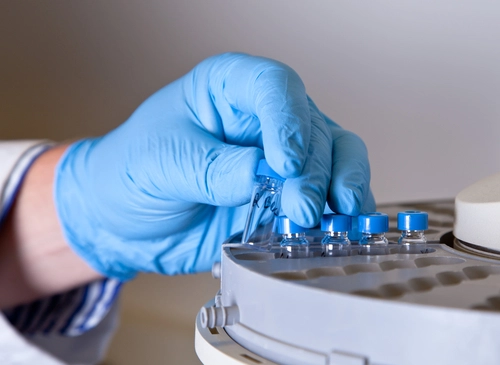CMS Proposal Would Dramatically Alter Drug Testing Codes

Agency fears overpayment for drugs-of-abuse testing.
Billing for Medicare-beneficiary drug testing is about to change — again. No, you won’t get to use the myriad codes from the CPT® 2015 drug-test coding update that Medicare declined to use this year. Nor will you continue to use the 28 “G” codes that CMS put in place for drug test reporting in 2015.
Instead, you’ll turn to just two codes in 2016 for all your Medicare drug test coding — that is, if CMS goes through with the proposal presented at the July 16, 2015 Annual Clinical Laboratory Public Meeting.
Recall 2015 CMS Plan
CMS opted not to price the 64 new CPT® 2015 toxicology codes due to “concern about the potential for overpayment when billing for each individual drug test,” according to the agency.
Instead, CMS continued to support two “G” codes for drug screening, and provided 28 new HCPCS Level II codes to describe definitive drug testing in 2015. For qualitative screening tests, you should currently be using one of the following codes:
For definitive testing for a Medicare beneficiary, you should be using one of the 28 “G” codes in the range G6030-G6058 for specific drug classes.
Compare to CPT® 2015 Options
In contrast, the CPT® 2015 toxicology makeover provides a new, comprehensive structure for coding
Drugs of Abuse: When testing for drugs of abuse (DOA) for non-Medicare payers, you should turn to the following codes, based on the CPT® 2015 update:
You’ll find codes in this subsection organized alphabetically by drug or drug class, such as alcohols (80320) or oxycodone (80365).You’ve always had codes for lots of these drugs, but CPT® used to list them in the therapeutic drug assay or chemistry sections. CPT® 2015 adds all new codes in the definitive drug class subsection for common drugs of abuse, and deletes the old codes for many of these same substances from the chemistry or therapeutic drug assay sections. CPT® 2015 also provides a new table, “Definitive Drug Classes Listing,” which shows common drugs and metabolites within each drug class.
Therapeutic drugs: If the clinician orders a test to monitor levels of a prescribed medication, you’ll turn to existing CPT® section “Therapeutic Drug Assays,” (80150-80299). These tests are quantitative, because the point of the testing is to evaluate therapeutic dosage as it relates to clinical response.
Sneak a Peek at CMS 2016 Drug-Test Coding Proposal
For the CMS Annual Clinical Laboratory Public Meeting on July 16, the agency made the following proposal regarding coding for DOA tests in calendar year (CY) 2016:
o GXXX1 — Drug screen, any number of drugs or drug classes, any procedure(s)/methodology(ies), any source(s), per day
o GXXX2 — Drug test(s) (confirmatory and/or definitive, qualitative and quantitative), any number of drugs or drug classes, any procedure(s)/methodology(ies), any source(s), includes sample validation, per day.”
CMS stated that the agency came to this recommendation “in consultation with the Substance Abuse and Mental Health Services Administration (SAMHSA) and the Office of National Drug Control Policy.”
Stakeholder response: The following comment expressed a common sentiment at the meeting: “We are concerned about drug testing and what was proposed [by CMS], because we don’t think that the detail in a two-code strategy adequately captures that information,” stated Lee Hillborn, MD, representing the American Society for Clinical Pathology (ASCP).
In fact, speakers at the public meeting unanimously expressed the opinion that the proposal doesn’t allow enough granularity to describe various drug testing scenarios, and would result in under and/or overpayment for DOA testing procedures.
“The approach simply does not allow for reporting individual drugs, and consequently makes it difficult to apply coverage policy and medical necessity determinations,” said Charles Root, PhD, presenting for the American Association for Clinical Chemistry (AACC).
Counter offer: Although stakeholders unanimously disapproved of the two-code plan, they did not agree what course CMS should take. Several commentators recommended that CMS adopt the existing CPT® codes. Others took a different approach.
For instance: “We believe six codes should be created that will adequately cover DOA testing: two codes for presumptive testing and four codes for definitive testing,” stated JoAnne Glisson, senior vice president of the American Clinical Laboratory Association (ACLA) in a letter to CMS referenced at the public meeting.
Several other speakers endorsed a similar recommendation, pointing to the MAC Palmetto GBA’s policy that provides tiered pricing for definitive drug testing involving increasing numbers of drug classes.
Wait and see: CMS will make a preliminary pricing determination for drug test codes by September, and you’ll have an opportunity to comment on the proposal before the agency finalizes the codes and pricing by the end of the year.
drug-test services.




